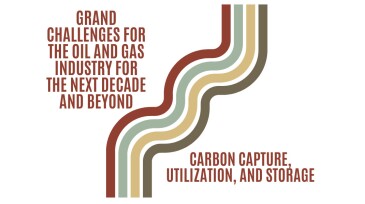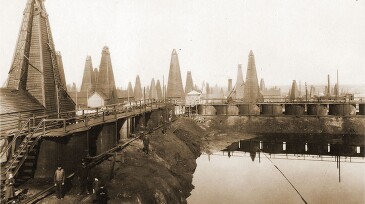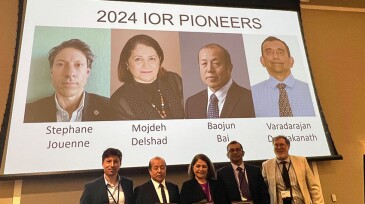Monthly Features
-
Data and impartial viewpoints can help de-risk exploration portfolios and keep resource estimates in check.
-
A new tubing-conveyed tool combines wellbore cleanout with multi-tracer deployment for production diagnostics and reservoir monitoring.
-
Alaskan oil is entering a renaissance driven by a predicted 13% upswing in 2026 production, the largest since the 1980s, and a possible reboot of LNG exports to Asia from the Kenai Peninsula, supplied via pipeline from the North Slope.
-
Technology developers expect the tight-oil industry to give lightweight proppants another look after the Permian Basin’s biggest operator becomes an adopter.
-
Operators from across the region met in Muscat to share how lessons from pilot programs are shaping cost, scale, and technology priorities across the region.
-
EERC CEO Charles Gorecki outlines how applied research in North Dakota is helping improve oil recovery, reduce emissions, and advance carbon storage.
-
The Earth has huge capacity to store carbon dioxide emitted from energy production. This article discusses the technology of carbon capture, utilization, and storage (CCUS) and its challenges.
-
Chevron recently revealed new details about its first-of-a-kind deepwater development in the Gulf of Mexico. We’ve picked some of the most interesting to share with you here.
-
As Azerbaijan prepares to host COP29, JPT looks back at how the country prospered for millennia on its largess of oil and gas and its unique geography along the ancient Silk Road that today is traversed by pipelines delivering gas and oil to Europe from the depths of the Caspian Sea.
-
Digital transformation presents a crucial opportunity to cut costs across business domains. This review explores unique digital transformation opportunities in the petroleum industry, highlighting valuable business process automations that can drive significant benefits.
-
Both new and old vessels are benefiting from automation processes that can improve operational efficiency, predict downtime, and debottleneck workflows using a flurry of crucial data points.
-
The honor recognizes recipients for their lasting and significant contributions in the field of IOR.
-
The retrofit merged enhanced gravity separation with induced gas flotation within the same vessel. Detailed insights into the design, operation, and performance of hybrid flotation systems are provided, offering valuable guidance for similar initiatives in the petroleum industry.
-
JPT’s first year of publication was one of groundbreaking events that would transform the global petroleum industry. A recap of developments in 1949 emphasizes the high hopes attached to the industry—and the ambitious goals of the new magazine.
-
Rising natural gas production plus not enough takeaway capacity equals one big headache for west Texas producers
-
The SPE Drilling and Wells Interoperability Standards group proposes a dual-path strategy to overcome the technical and commercial barriers facing the advancement of drilling automation.
Explore Content by Discipline
Power Up With JPT Newsletters
JPT Newsletter (Weekly).
All the top stories, trends, and tech.
JPT Unconventional Insights (Monthly).
Fresh takes on shale and tight oil.
Get JPT articles in your LinkedIn feed and stay current with oil and gas news and technology.
















